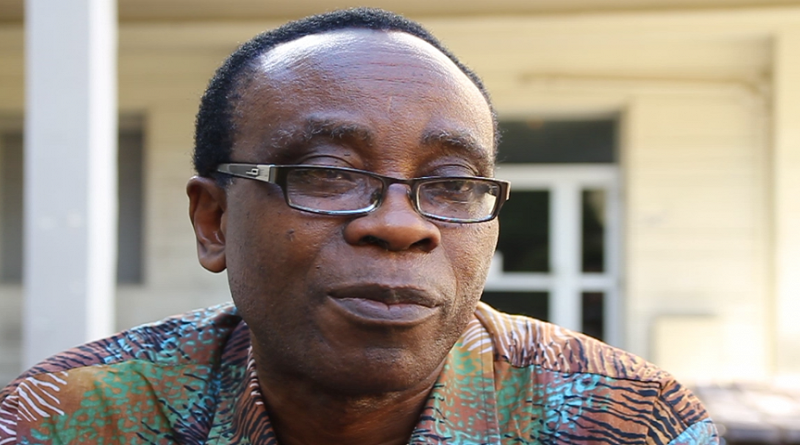World Environment Day: In the belly of the plastic whale
Director, Health of Mother Earth Foundation (HOMEF), Nnimmo Bassey, in this treatise writes on the impact on plastic pollution to the environment to commemorate the World Environment Day and the World Oceans Day 2018
It was a surreal feeling for me to literally step into the belly of a whale in December 2017. It was an unforgettable experience, to say the least. One could not but imagine what would have been the fate of biblical Jonah if he had found himself in the belly of a whale like the one I encountered.
My encounter was with a Cuvier’s beaked whale. An adult male Cuvier’s beaked whale can weigh up to 3000 kilogrammes and measure 5-7 metres in length. These whales usually have just two visible teeth at the tip of their short beak. Lacking much in terms of teeth, they feed by suction. They hunt by echolocation and can be injured or confused by noises generated by humans, including noise from seismic exploration for fossil fuel resources.
Encountering them is not easy, so Jonah would probably not have been given a hike by this specie. Why? They live where there is no light, at about 2000 metres way down in the ocean. Plus, they feed on fish, crustaceans and mostly deep-sea squid. This appetite for squid may be one of the key problems that modern man now poses to these deep-sea creatures.
Scientists suspect that the Cuvier’sbeaked whales get attracted to floating plastics, mistaking them for squids or ingest them while hunting for other species that may seek hiding places in floating plastics materials. Plastics in the seas are a huge threat to the Cuvier whales and other sea creatures.
Ending a Plastic Civilisation
The World Environment Day 2018 presents a challenge and an instigation. The theme,Beat Plastic Pollution, challenges us to take action and the notion that plastics pollution can be beaten should inspire actions. The World Oceans Day equally urges action against plastic pollution.
Beating plastics pollution is a huge challenge when we consider the perverse culture of current disposable economy. Fifty percent of plastics in use are disposable or single-use type. Globally, we buy one million plastic bottles every minute and use up to 5 trillion plastic bags every year.The least anyone can do is to pause and think before grabbing that plastic bottle of so-called soft drinks. We should learn to refuse plastics and not just aim to reduce, reuse or recycle them. It is time to tackle this menace at source. Packaging is said to account for 40 percent of all plastics in use. It is time to terminate this plastic civilisation.
Sadly, many folks think that the story of their plastic bags or wraps end once they toss them into the trash bin. In a bid to appear hygienic, we cover or wrap foods with plastics – in both restaurants and homes. However, plastics out of sight is not plastics out of life. Tons of these materials end up in the gutters, rivers and the oceans. 15 tons of plastics are said to end up in the ocean every minute with more than 8 million tonsbeing dumped into the oceans every year.An incredible 1 million seabirds and 100,000 marine mammals lose their lives to plastic pollution every year
Reports by Ocean Conservancy, suggest that there will be more plastics than fish in the oceans by 2050. Already, plastics have been found in over 60 percent of all seabirds and in all sea turtles species that mistake plastic for food. We must beat plastics,for our survival and for the survival of other species. We need fish, not plastics.
Floating on the waves
It is interesting when we consider how long it takes for some of the plastics that end up in the oceans to decompose. Tissue papers decompose in 2 to 4 weeks. Cigarettes decompose in 5 years. The plastic cups in which coffee is served at cafes and fast food shops float around for 50 years. Plastic bottles will swirl about for 450 years. And, wait for it, the plastic in baby diapers will equally hang around for 450 years – long after the babies who wore them would have become ancestors. Even the balloons that are used as decorative items- when released to float around for a few minutes or hours, end up taking years to degrade in the oceans and water ways.
And, so, there was I in the belly of the Plastic Whale Museum, a museum set up at the University of Bergen, Norway, to serve as a poignant reminder of the harm that plastics pose to our oceans and to marine life in particular. This museum hosts displays of the plastics recovered from the belly of the whale that was stranded on the Sotra Island, west of Bergen, on 28th January 2017. The whale had more than 30 plastic bags and a large quantity of microplastics in its belly.
As we gathered in the museum todiscuss plastics, oil pollution and the threat to our communities as well as to marine ecosystems, the plastic backdrop was a haunting reminder of the harm that we are doing to our environment. When we eat fish that feeds on plastics, it is reasonable to say that we are actually eating plastics.
On that day, I ended my talk with a rendition of my poem, We Thought it Was Oil, but It Was Blood. Perhaps I should have changed that to read We Thought it Was Fish,butIt Was Plastic.We simply have to beat plastic pollution.




